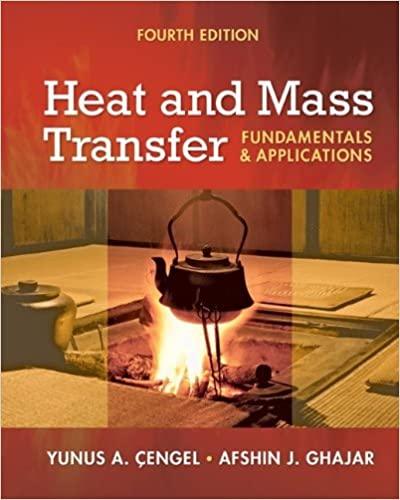Answered step by step
Verified Expert Solution
Question
1 Approved Answer
1 . Re - read Example 1 1 - 2 in the book, then repeat the HAZOP study, this time with the node being the
Reread Example in the book, then repeat the HAZOP study, this time with the node being the "monomer feed". Develop an Excel table formatted similarly to the one on pg Ignore the "Action Required" column. Write at least one paragraph to accompany your table, describing the analysis you performed and the choices you made. Your analysis should answer the following questions: What process parameter was chosen, and why? What are the possible deviations, and the causes of those deviations? What could the consequences be What safeguards are already in place to prevent those consequences? exothermic, so a cooling system ent In the event that the cool This would lead to an increase in Example Consider the reactor system shown in Figure The reaction is exothermir is used to remove the excess energy of reaction this is the design intent In th ing function is lost, the temperature of the reactor would increase. This would reaction rate, resulting in additional energy release. The ultimate result would be a with pressures exceeding the bursting pressure of the reactor vessel. in the reactor is measured and is used to control the cooling water with a valve Perform a partial HAZOP study on this unit to improve the safety of the proces cooling coil as a study node, a process parameter of flow, and the guide words of No Solution The guide words are applied to the study node of the cooling coils with the proces flow. The HAZOP results are shown in Table though the table does not contain the com results of the HAZOP study e the safety of the process. Use the words of NO HIGH, and Low. o coils with the process parameter of le does not contain the complete Reactor Monomer Feed Cooling Coil Cooling Water Out Cooling Water In H S H TC Thermocouple Figure An exothermic reaction controlled by cooling water. Table HAZOP Study Applied to the Exothermic Reactor of Example Project name: Example Date: July Process: Reactor of Example Page of Section: Reactor shown in example Reference drawing: Study Process Deviations Item node parameters Guide words Possible causes Possible consequences Existing safeguards Action required A Cooling Flow coils No Control valve fails Loss of cooling, & Flow Select valve to fail open. closed possible runaway. transmitter with Plugged cooling coils Same as lowflow alarm and Install filter with hightemperature maintenance procedure. alarm on reactor. Install cooling water flow meter and lowflow alarm. Install hightemperature alarm to alert operator. Cooling water service Same as No Check and monitor failure. safeguards. reliability of water service. Controller fails and Same as Place controller on critical closes valve. instrumentation list. Air pressure fails, Same as I. See AI. closing valve. Control valve fails Reactor cools, reactant I. No safeguards. Instruct operators and open. concentration builds, update procedures. possible sleeping reactor.. Controller fails and Same as Flow transmitter Place controller on critical opens valve. with highflow instrumentation list. See A alarm. Partially plugged Diminished cooling, See A See A cooling coils. possible runaway. Partial water source Same as See A See A failure. Control valve fails to Same as No safeguard. Place valve on critical respond. instrumentation list. High Low
Step by Step Solution
There are 3 Steps involved in it
Step: 1

Get Instant Access to Expert-Tailored Solutions
See step-by-step solutions with expert insights and AI powered tools for academic success
Step: 2

Step: 3

Ace Your Homework with AI
Get the answers you need in no time with our AI-driven, step-by-step assistance
Get Started


